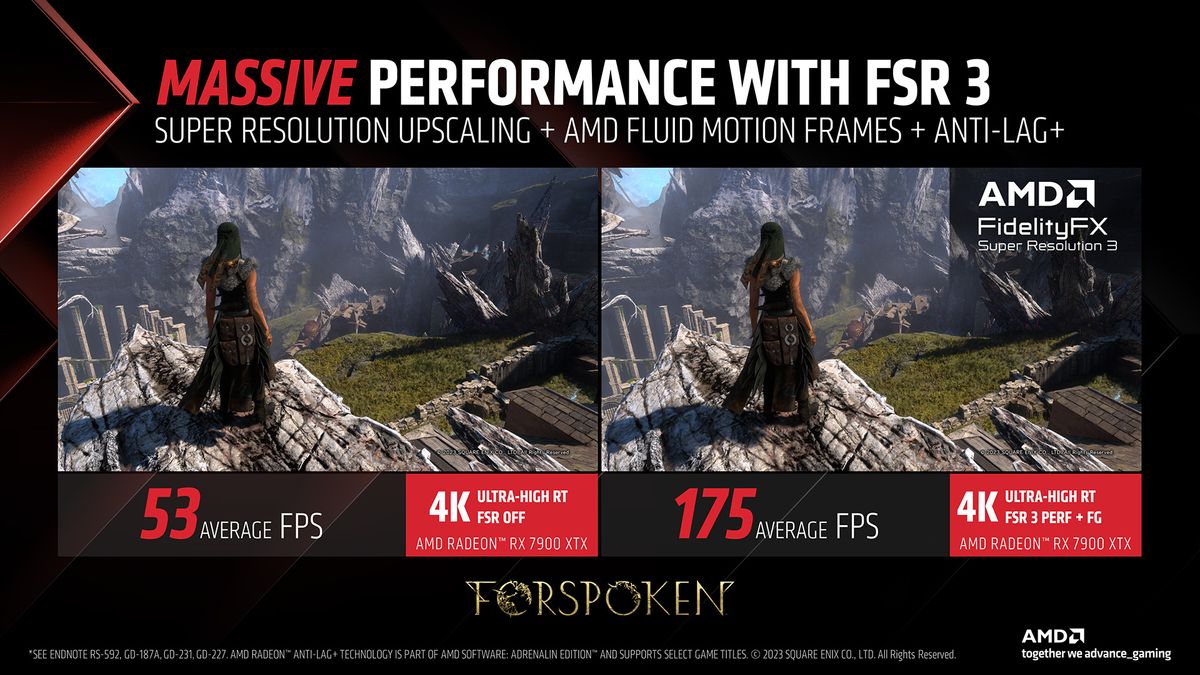AMD’s Chief Technology Officer, Mark Papermaster, revealed in an interview that AMD is set to introduce AI-driven upscaling capabilities on its gaming devices in the future. This move signifies a strategic shift as AMD aims to enhance its FidelityFX Super Resolution (FSR) technology by integrating AI-based upscaling to compete with industry rivals like Nvidia and Intel, who offer DLSS and XeSS technologies respectively.
In response to a query about the company’s focus in 2024, Papermaster emphasized the significance of the current year in AMD’s roadmap. He highlighted the extensive efforts invested in developing AI capabilities across their entire product lineup, spanning cloud services, edge computing, PCs, and gaming devices. The pivotal development involves enabling AI-driven upscaling on their gaming devices, reflecting a comprehensive integration of AI technology throughout AMD’s software ecosystem.
The incorporation of AI-based upscaling is positioned as a holistic initiative within AMD, aiming to “AI-ify” all applications rather than solely as a competitive response to Nvidia’s DLSS technology. With the recent introduction of AMD’s XDNA NPUs in their latest Ryzen desktop and mobile APUs, the integration of AI across their software portfolio aligns with leveraging the new NPU-equipped APUs to their full potential, driving adoption rates.
The evolution towards AI-assisted upscaling marks a significant advancement for FSR, representing a substantial upgrade since the introduction of FSR 2 with temporal upscaling. The utilization of AI is expected to elevate FSR’s image quality by introducing finer details into scenes, potentially surpassing the capabilities of the current FSR 2 implementation. Drawing insights from Nvidia’s DLSS success, AI-based upscalers have demonstrated the ability to enhance image quality beyond native resolution, a feat that has garnered industry acclaim.
Presently, AMD’s FSR upscaling technology relies on a temporal upscaler incorporating Edge-Adaptive Spatial Upsampling and Robust Contrast-Adaptive Sharpening techniques. Additionally, FSR employs various functions such as color space conversions, dithering, and tone mapping to optimize the upscaled image quality. Notably, omitting these techniques would result in a significantly degraded visual output.
The specifics of how AMD will integrate AI into FSR remain undisclosed. There is speculation that AMD might adopt a similar approach to Nvidia’s DLSS by leveraging neural networks to extrapolate data from high-resolution in-game frames. This data could serve as a reference point for AMD’s FSR AI upscaler to generate high-quality images seamlessly within games.
A critical consideration for FSR AI-upscaling is the hardware support it will entail. If AMD tailors its AI-infused FSR for XDNA NPUs, compatibility might be restricted to specific hardware configurations like Ryzen 8000 series mobile CPUs, Ryzen 8000 series desktop APUs, and Radeon RX 7000 series GPUs equipped with AI accelerators. This could potentially exclude a significant portion of the existing AMD user base, particularly those with older hardware setups.
The implementation details of AMD’s AI upscaling technology remain shrouded in uncertainty. It remains to be seen whether the AI-enhanced upscaler will be limited to systems featuring XDNA NPUs or if it will encompass a broader spectrum of hardware configurations. The community eagerly anticipates further insights into AMD’s approach, hoping for a comprehensive update to FSR 2 that caters to a wider range of system setups.










